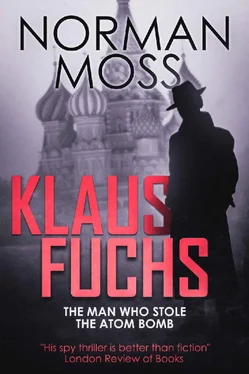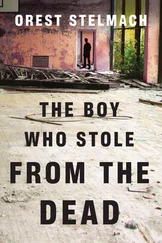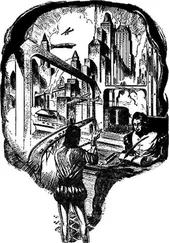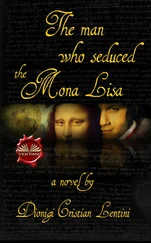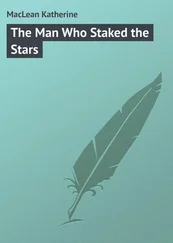Norman Moss - Klaus Fuchs - The Man Who Stole the Atom Bomb
Здесь есть возможность читать онлайн «Norman Moss - Klaus Fuchs - The Man Who Stole the Atom Bomb» весь текст электронной книги совершенно бесплатно (целиком полную версию без сокращений). В некоторых случаях можно слушать аудио, скачать через торрент в формате fb2 и присутствует краткое содержание. Город: London, Год выпуска: 2018, ISBN: 2018, Издательство: Sharpe Books, Жанр: История, Биографии и Мемуары, на английском языке. Описание произведения, (предисловие) а так же отзывы посетителей доступны на портале библиотеки ЛибКат.
- Название:Klaus Fuchs: The Man Who Stole the Atom Bomb
- Автор:
- Издательство:Sharpe Books
- Жанр:
- Год:2018
- Город:London
- ISBN:978-0-31201-349-3
- Рейтинг книги:3 / 5. Голосов: 1
-
Избранное:Добавить в избранное
- Отзывы:
-
Ваша оценка:
- 60
- 1
- 2
- 3
- 4
- 5
Klaus Fuchs: The Man Who Stole the Atom Bomb: краткое содержание, описание и аннотация
Предлагаем к чтению аннотацию, описание, краткое содержание или предисловие (зависит от того, что написал сам автор книги «Klaus Fuchs: The Man Who Stole the Atom Bomb»). Если вы не нашли необходимую информацию о книге — напишите в комментариях, мы постараемся отыскать её.
Klaus Fuchs: The Man Who Stole the Atom Bomb — читать онлайн бесплатно полную книгу (весь текст) целиком
Ниже представлен текст книги, разбитый по страницам. Система сохранения места последней прочитанной страницы, позволяет с удобством читать онлайн бесплатно книгу «Klaus Fuchs: The Man Who Stole the Atom Bomb», без необходимости каждый раз заново искать на чём Вы остановились. Поставьте закладку, и сможете в любой момент перейти на страницу, на которой закончили чтение.
Интервал:
Закладка:
The scenery was an essential part of the Los Alamos experience. It is spectacularly beautiful: a sand-coloured landscape riven by winding canyons thousands of feet deep, the biggest of them containing the upper stretch of the Rio Grande, interspersed with mesas — narrow, steep-sided plateaus characteristic of the region, as if some giant god had doodled in wet sand with a mile-long forefinger. Soft rock faces have been sculpted by aeons of wind into outlandish shapes, and burnished in different colours. It is a landscape familiar to everyone from western films: the Indians on their horses at the cliff’s edge, looking down on the stagecoach winding along the trail far below.
There are forests of fir, and ponderosa pine, and aspens that turn golden in the autumn; and forty miles to the west, but standing out sharply in the clean air, the Sangre de Cristo Mountains, so named by the Spanish explorers of this area because of the glorious blood-red glow along the peaks as the sun sets behind them. The air at Los Alamos is pure, and thin also, for it is 7,200 feet high.
Mrs Peierls recalled later being driven along the road up from Santa Fe on her arrival: ‘It was late in the afternoon, the sun was low in the sky, and the colours were unbelievable! As we got higher and higher along this winding road, there were more cliffs at every turning, and forests, and long views, and sharply etched colours. It was just like climbing up to heaven!’
She added that this visual paradise came to an end when they arrived and she saw the ugly buildings that the army had put up. For in those days Los Alamos was a blot on this beautiful landscape. There were a few log cabins left over from the ranch school, but mostly one saw drab houses painted army green that looked like miniature barracks, and even more drab Nissen huts, and structures built to house machinery that provided the services, often of corrugated iron. The roads were merely tracks, dusty, or muddy if there had been rain or snow, some of them covered with duckboard, usually spanned at some point by a cluster of electric wires, or else clotheslines hung with washing.
Everyone was working there under the intense pressure of world events. They saw the prospect of shortening by their efforts the war that was costing thousands of lives every day, but also the nightmare possibility that Nazi Germany might beat them and get the bomb first.
By the summer of 1944, the uranium diffusion plant at Oak Ridge, Tennessee, was operating and the theoretical work in New York was finished. It was suggested that as Peierls, Fuchs and Skyrme already knew about the fundamentals of the bomb project they should go to Los Alamos and contribute their skills there, instead of returning to Britain. They agreed readily, and arrived in August. Several British scientists were already there. Otto Frisch had gone straight to Los Alamos after arriving from England on the Andes, as had a few others. James Chadwick, who had worked on Tube Alloys at Liverpool University, was designated chief of the British atomic energy mission in the United States, and had taken up residence there.
The project was divided into several divisions, and the three newcomers all joined the Theoretical Division, which was headed by the German-born Hans Bethe. Bethe had asked particularly for Peierls to come to Los Alamos. They had been warm friends ever since they were graduate students together in Munich in 1927, and found they shared the same sense of humour, and Bethe had a high regard for Peierls’s ability. Bethe also had lived in the Peierls’ house when he went to England from Germany in 1934. Although genial and friendly (his students at Cornell call him by his first name) he has the slow, slightly pedantic manner that one expects of a traditional German professor, but also one of the most powerful minds in modern physics. At a party at Los Alamos once, Frisch threw a complicated mathematical problem at Bethe and Richard Feynman, a brilliant, fast-talking young American physicist with a lightning manner (games like this were often played at Los Alamos parties). The betting was on the quicksilver Feynman, but Bethe solved it first.
Bethe recalled meeting Fuchs when he went to Bristol University for a short period in 1934, soon after leaving Germany. He remembered him, as he said later, as being ‘brilliant, quiet and unassuming’, and he agreed readily when Peierls said he wanted to bring him. At Los Alamos, he was confirmed in his high regard for Fuchs’s abilities. But meeting him socially he could not get close to him, and found him inscrutable.
The Peierls found a number of old friends at Los Alamos, for there were many there from the international fraternity of young nuclear physicists of the 1930s. They were assigned the top half of a two-storey house; the bottom half was occupied by the Fermis, whom they had known when Peierls worked at Enrico Fermi’s laboratory in Rome. Their children played together and became friends.
Fuchs was assigned a room in the big house that was used as bachelor quarters. He used to eat his meals with the other bachelors in Fuller’s Lodge, the main administrative building and one that remained from the boarding school, where there was a communal dining-room.
There was nowhere to go in the evenings, and although people occasionally made the trip into Santa Fe, social life consisted mainly of visiting one another’s homes, negotiating the duckboard avenues and the muddy paths in the dark, for there was no street lighting. The Peierls took Fuchs along when old friends asked them over, but in any case people were happy to invite this newcomer from England. He always accepted the invitations but, certainly at first, he showed his old reticence. The first evening he visited Martin and Suzanne Deutsch, he sat on the corner of a sofa facing a wall and did not say a word for hours on end. Nevertheless, they persisted in cultivating his friendship. For one thing, Deutsch, who came from Vienna, was impressed by the fact that Fuchs was a refugee because of his convictions rather than his race.
Genia Peierls organized a picnic for her family, the Fermis and Fuchs: she was a great one for organizing people. They drove to Frijoles Canyon some twenty miles away, a favourite spot for outings where the remains of prehistoric settlements and cave dwellings are to be found. Fuchs did not open up. He was nervous, and unresponsive to the Fermis’ conversational overtures, and they did not get to know him well.
He got along better with Victor Weisskopf, a leading figure in the Theoretical Division. Unlike many others from Germany and Austria, who made every effort to become American or British to the point of losing their former national identities, the Viennese-born Weisskopf, a man with a wide appreciation of the arts, was determined to retain and even to assert his cultural heritage; he often spoke German at home with his Danish-born wife Ellen. Fuchs spoke German in the Weisskopfs’ home, and on one occasion borrowed a German novel from them.
Fuchs became friendly with someone who could not be more unlike him in temperament, Richard Feynman, the fast-talking American who was bested by Bethe in the race to solve a mathematical problem. Feynman is today one of the great figures of physics, a Nobel laureate who devised space-time diagrams that are named after him. At Los Alamos he was still in his early twenties, a bubbling, excitable, irrepressible extrovert. He would play the bongo drums at parties, and do impersonations. He would tease soldiers on guard duty by checking out at the gate, crawling back in under the wire fence, and checking out again without having checked in. He used to sneak into people’s offices and crack the locks of their combination safes, and leave jokey little notes inside. His method of cracking their safes eluded them: he guessed that many scientists would not bother to remember new numbers and would choose as the combinations of their safes scientific constants; one was simply pi backwards.
Читать дальшеИнтервал:
Закладка:
Похожие книги на «Klaus Fuchs: The Man Who Stole the Atom Bomb»
Представляем Вашему вниманию похожие книги на «Klaus Fuchs: The Man Who Stole the Atom Bomb» списком для выбора. Мы отобрали схожую по названию и смыслу литературу в надежде предоставить читателям больше вариантов отыскать новые, интересные, ещё непрочитанные произведения.
Обсуждение, отзывы о книге «Klaus Fuchs: The Man Who Stole the Atom Bomb» и просто собственные мнения читателей. Оставьте ваши комментарии, напишите, что Вы думаете о произведении, его смысле или главных героях. Укажите что конкретно понравилось, а что нет, и почему Вы так считаете.
